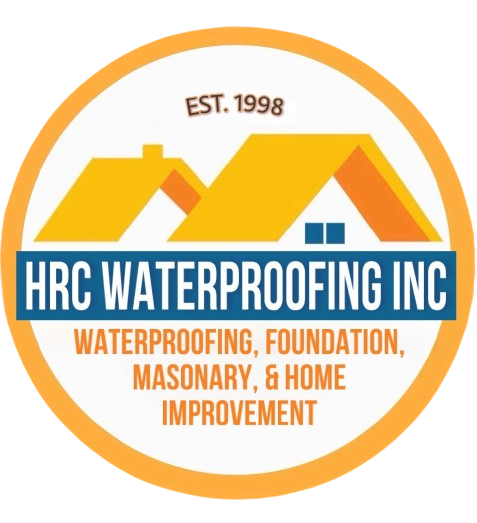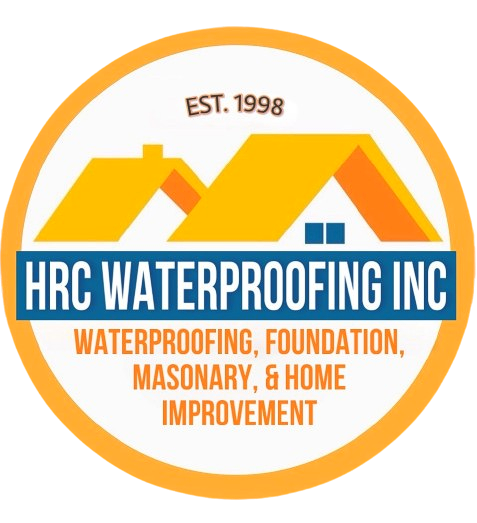Interior Waterproofing Solutions in NY – Keep Your Basement & Foundation Dry
HRC Waterproofing Inc. provides expert interior waterproofing services throughout New York City—including Brooklyn, Queens, Manhattan, the Bronx, Staten Island, plus Nassau and Westchester. With over 25 years of owner-operated experience, we protect your home or business from leaks, mold, and water damage using proven interior solutions like French drains, vapor barriers, crack sealing, and sump pump systems.
Interior waterproofing is a cost-effective, minimally invasive way to protect your basement or crawl space from water infiltration—especially when exterior access is limited. At HRC Waterproofing Inc., we combine advanced materials with professional installation to prevent moisture, reduce humidity, and increase your property’s long-term structural integrity.
SERVICE AREAS
We proudly serve homeowners, property managers, commercial buildings
and builders across:
- New York City: Brooklyn, Manhattan, Queens, Bronx, Staten Island
- Surrounding Counties: Nassau County, Westchester County
OUR INTERIOR WATERPROOFING PROCESS
Interior Drainage System
Trench drains are installed along the perimeter of the basement floor that capture incoming water and direct it to a sump pump. This method prevents water pressure buildup against foundation walls and ensures proper drainage inside the home.
- Best for: Finished or unfinished basements
- Installed with: Gravel, drainage piping, vapor barriers
- Benefits: Reduces hydrostatic pressure, long-term moisture control
Sump Pump Installation & Maintenance
A sump pump is your basement’s first line of defense. We install high-capacity cast iron sump pumps with battery backups to keep your basement dry—even during power outages or storms.
- Top Features: Airtight lid, backup battery, water alarm, pump basin
- Brands We Use: Zoeller, Liberty Pumps
- Includes: Annual maintenance, system testing, and repair
Waterproof Floor Coatings & Sealers
Penetrating sealers like silicate-based hardeners and epoxy coatings protect basement floors from water absorption and surface deterioration.
- Products We Use:
- Ghostshield® Siloxa-Tek 8510 (penetrating sealer)
- Ghostshield® Lithi-Tek 9500 (concrete densifier)
- Drylok® and RadonSeal® for surface waterproofing
- Application: Works on bare concrete, preps surface for finished floors
Interior Drain Tile Systems
Installed beneath the basement floor slab, these systems collect water at the footing and direct it toward the sump pump.
- Ideal for: Older homes, high water table areas
- Benefits: Discreet, effective, minimal maintenance
- Add-ons: Backflow preventers, inspection ports
Basement Dehumidifiers
To supplement your interior waterproofing, we recommend installing high-capacity dehumidifiers to keep relative humidity below 50%.
- Top Brands: Aprilaire®, Santa Fe®
- Improves: Indoor air quality, mold prevention, energy efficiency
CLIENT TESTIMONIALS
BEnefits of Choosing HRC Waterproofing inc.
✅ 25+ Years of Owner-Operated Experience
✅ Licensed, Insured, & Highly Rated
✅ Free Inspections & Transparent Estimates
✅ Financing Options Available
✅ Discounts for Seniors, Veterans, & First Responders
Protect your home from interior water damage—before it leads to mold or foundation issues.
Contact HRC Waterproofing Inc. today for a free interior waterproofing inspection. We’ll assess your basement or crawl space and recommend the best solution for long-term protection.
FAQ's
What exactly is interior waterproofing, and how is it different from exterior waterproofing?
Interior waterproofing focuses on managing water that has already entered or is entering a basement or crawl space. It involves installing drainage systems, sump pumps, and vapor barriers from inside the home. Unlike exterior waterproofing, which often requires excavation, interior solutions are less invasive and more cost-effective in densely built areas like New York City where exterior access is limited.
Why does my basement leak even though there are no visible cracks in the walls?
Water can seep through porous concrete or cinder blocks, not just cracks. Hydrostatic pressure builds up in NYC’s water table, pushing moisture through walls and floors. In some cases, condensation or plumbing leaks also contribute. HRC Waterproofing uses specialized moisture detection equipment to pinpoint hidden leaks and design comprehensive solutions tailored to the unique foundation conditions of your property.
Will interior waterproofing eliminate all mold and mildew in my basement?
Interior waterproofing creates a dry environment that prevents new mold growth, but it doesn’t automatically remove existing mold. HRC Waterproofing offers mold remediation or can work with mold specialists to ensure your space is not only dry but also healthy. Proper ventilation, dehumidification, and sealing are key steps in creating a lasting mold-resistant environment.
Is a sump pump necessary in every interior waterproofing system?
Not always. It depends on the severity of your water intrusion and the drainage strategy used. In low-lying areas of NYC with high groundwater or frequent flooding, sump pumps are often essential. HRC Waterproofing evaluates your basement’s grade, water entry points, and drainage options before recommending a sump pump. If installed, they also include battery backups to prevent failure during power outages.
How long does it take to complete an interior waterproofing job?
Project timelines vary based on basement size, the severity of the water issue, and the type of system installed. Most interior waterproofing jobs are completed in 2–5 days. HRC Waterproofing ensures minimal disruption by carefully scheduling phases and cleaning up thoroughly each day. Clients receive a clear project timeline upfront with daily progress updates.
Will interior waterproofing raise my property value in New York?
Yes. A dry, usable basement increases livable square footage and adds to your property’s appeal in NYC’s competitive real estate market. Many buyers view waterproofed basements as a premium feature, especially in older buildings where water issues are common. HRC Waterproofing provides transferable warranties, which are an added selling point for future buyers.
What happens if I ignore a basement water problem?
Delaying waterproofing can lead to serious structural damage, mold growth, rotting wood, and ruined possessions. Over time, unchecked moisture can deteriorate foundations and reduce indoor air quality. In NYC’s humid, flood-prone climate, these problems escalate quickly. Early intervention by HRC Waterproofing can prevent thousands of dollars in future repairs and health risks.
How can I tell if my basement water problem is from condensation or seepage?
Condensation often forms on cold surfaces (like pipes or walls) and occurs during humid conditions. Seepage leaves wet patches on walls or puddles near the foundation, even during dry weather. HRC Waterproofing conducts a thorough inspection using moisture meters and thermal imaging to identify the source and customize the right waterproofing plan.
Can interior waterproofing stop water from coming up through the basement floor?
Yes. This problem, known as hydrostatic pressure, is common in areas with high water tables like NYC. HRC Waterproofing installs sub-floor drainage systems, including French drains and sump pumps, to relieve pressure and redirect water away before it can rise. These systems are discreetly installed under your floor slab, with minimal impact to the space.
Is interior waterproofing disruptive to my daily life or living space?
Interior waterproofing is designed to be minimally disruptive. HRC Waterproofing uses dust containment barriers, proper ventilation, and daily cleanup to maintain a safe and livable environment throughout the project. Most work is done in basements or crawl spaces, allowing homeowners to continue their routine uninterrupted in the main living areas.

